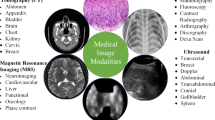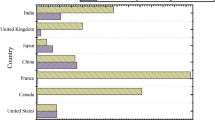Abstract
Diabetic retinopathy (DR) and diabetic macular edema (DME) are both serious eye conditions associated with diabetes and if left untreated, and they can lead to permanent blindness. Traditional methods for screening these conditions rely on manual image analysis by experts, which can be time-consuming and costly due to the scarcity of such experts. To overcome the aforementioned challenges, we present the Modified CornerNet approach with DenseNet-100. This system aims to localize and classify lesions associated with DR and DME. To train our model, we first generate annotations for input samples. These annotations likely include information about the location and type of lesions within the retinal images. DenseNet-100 is a deep CNN used for feature extraction, and CornerNet is a one-stage object detection model. CornerNet is known for its ability to accurately localize small objects, which makes it suitable for detecting lesions in retinal images. We assessed our technique on two challenging datasets, EyePACS and IDRiD. These datasets contain a diverse range of retinal images, which is important to estimate the performance of our model. Further, the proposed model is also tested in the cross-corpus scenario on two challenging datasets named APTOS-2019 and Diaretdb1 to assess the generalizability of our system. According to the accomplished analysis, our method outperformed the latest approaches in terms of both qualitative and quantitative results. The ability to effectively localize small abnormalities and handle over-fitted challenges is highlighted as a key strength of the suggested framework which can assist the practitioners in the timely recognition of such eye ailments.
Graphical Abstract










Similar content being viewed by others
References
Nawaz M et al (2022) An efficient deep learning approach to automatic glaucoma detection using optic disc and optic cup localization. Sensors 22(2):434
Nazir T et al (2021) Detection of diabetic eye disease from retinal images using a deep learning based CenterNet model. Sensors 21(16):5283
Nazir T, Irtaza A, Rashid J, Nawaz M, Mehmood T (2020) Diabetic retinopathy lesions detection using faster-RCNN from retinal images, in 2020 First International Conference of Smart Systems and Emerging Technologies (SMARTTECH), IEEE, pp. 38–42
Nawaz M, Nazir T, Masood M (2021) Glaucoma detection using tetragonal local octa patterns and SVM from retinal images. Int Arab J Inf Technol 18(5):686–693
Jacoba CMP et al (2023) Performance of automated machine learning for diabetic retinopathy image classification from multi-field handheld retinal images. Ophthalmol Retina 7(8):703–712
Reddy S, Soma S, Jadhav A, Pawar R, Madabhavi G, Patil RS (2023) Deep belief network based diabetic maculopathy detection and classification using modified chicken swarm algorithm, in 2023 International Conference on Computational Intelligence, Communication Technology and Networking (CICTN), IEEE, pp. 380–385
Zhu W, Qiu P, Lepore N, Dumitrascu OM, Wang Y (2023) NNMobile-Net: rethinking CNN design for deep learning-based retinopathy research. arXiv:01289
Reddy VPC, Gurrala KK (2022) Joint DR-DME classification using deep learning-CNN based modified grey-wolf optimizer with variable weights. Biomed Signal Process Control 73:103439
Yang Z, Tan T-E, Shao Y, Wong TY, Li X (2022) Classification of diabetic retinopathy: past, present and future. Front Endocrinol 13:1079217
Shahriari MH, Sabbaghi H, Asadi F, Hosseini A, Khorrami Z (20220 Artificial intelligence in screening, diagnosis, and classification of diabetic macular edema: a systematic review. Surv Ophthalmol 68(1):42–53
Bogacsovics G, Toth J, Hajdu A, Harangi B (2022) Enhancing CNNs through the use of hand-crafted features in automated fundus image classification. Biomed Signal Process Control 76:103685
Reddy VPC, Gurrala KK (2022) OHGCNet: optimal feature selection-based hybrid graph convolutional network model for joint DR-DME classification. Biomed Signal Process Control 78:103952
Lu Z, Miao J, Dong J, Zhu S, Wang X, Feng J (2023) Automatic classification of retinal diseases with transfer learning-based lightweight convolutional neural network. Biomed Signal Process Control 81:104365
Usman TM, Saheed YK, Ignace D, Nsang A (2023) Diabetic retinopathy detection using principal component analysis multi-label feature extraction and classification. Int J Cogn Comput Eng 4:78–88
Wu T, Liu L, Zhang T, Wu X (2022) Deep learning-based risk classification and auxiliary diagnosis of macular edema. Intell-Based Med 6:100053
Jiwani N, Gupta K, Afreen N (2022) A convolutional neural network approach for diabetic retinopathy classification, in 2022 IEEE 11th International Conference on Communication Systems and Network Technologies (CSNT), IEEE, pp. 357–361
Sreekanth G et al. (2021) Automated detection and classification of diabetic retinopathy and diabetic macular edema in retinal fundus images using deep learning approach, NVEO-Natural volatiles essential oils Journal NVEO, pp. 61–70
Nasir N, Afreen N, Patel R, Kaur S, Sameer M (2021) A transfer learning approach for diabetic retinopathy and diabetic macular edema severity grading. Rev d’Intell Artif 35(6):497–502
Saranya K, Lakshmanan N, Mathivanan S, Logeshwaran M (2023) Deep learning based algorithm for detection of diabetic retinopathy. Int Res J Educ Technol
Sarki R, Ahmed K, Wang H, Zhang Y, Wang K (2022) Convolutional neural network for multi-class classification of diabetic eye disease. EAI Endorsed Trans Scalable Inform Syst 9(4):e5–e5
Remya K, Giriprasad M, Sudhakar M (2023) A localized feature description means assisting diabetic macular edema detection and classification. Wireless Personal Commun 129(4):2909–2927
Sarki R, Ahmed K, Wang H, Zhang Y, Ma J, Wang K (2021) Image preprocessing in classification and identification of diabetic eye diseases. Data Sci Eng 6(4):455–471
He J, Wang J, Han Z, Ma J, Wang C, Qi M (2023) An interpretable transformer network for the retinal disease classification using optical coherence tomography. Sci Rep 13(1):3637
Da Rocha DA, Ferreira FMF, Peixoto ZMA (2022) Diabetic retinopathy classification using VGG16 neural network. Res Biomed Eng 38(2):761–772
Kumar A, Tewari AS, Singh JP (2022) Classification of diabetic macular edema severity using deep learning technique. Res Biomed Eng 38(3):977–987
Law H, Deng J (2019) CornerNet: detecting objects as paired keypoints. Int J Comput Vision 128:642–656
Lin T (2021) Labelimg. https://github.com/tzutalin/labelImg/blob/master/README (accessed 08 April, 2021)
Girshick R (2015) Fast r-cnn, in Proceedings of the IEEE international conference on computer vision, pp. 1440–1448. https://doi.org/10.1109/ICCV.2015.169
Ren S, He K, Girshick R, Sun J (2016) Faster R-CNN: towards real-time object detection with region proposal networks. IEEE Trans Pattern Anal Mach Intell 39(6):1137–1149
Raj A, Namboodiri VP, Tuytelaars T (2015) Subspace alignment based domain adaptation for rcnn detector. arXiv preprint arXiv:1507.05578
Zhao X, Li W, Zhang Y, Gulliver TA, Chang S, Feng Z (2016) A faster RCNN-based pedestrian detection system, in 2016 IEEE 84th Vehicular Technology Conference (VTC-Fall), IEEE, pp. 1–5
Redmon J, Divvala S, Girshick R, Farhadi A (2016) You only look once: unified, real-time object detection, in Proceedings of the IEEE conference on computer vision and pattern recognition, pp. 779–788
Liu W et al (2016) Ssd: Single shot multibox detector. European conference on computer vision. Springer, pp 21–37
Redmon J, Farhadi A (2018) Yolov3: an incremental improvement. arXiv preprint arXiv:.02767
Girshick R, Donahue J, Darrell T, Malik J (2015) Region-based convolutional networks for accurate object detection and segmentation. IEEE Trans Pattern Anal Mach Intell 38(1):142–158
Zhao Z-Q, Zheng P, Xu S-T, Wu X (2019) Object detection with deep learning: a review. IEEE Trans Neural Networks Learn Syst 30(11):3212–3232
Huang G, Liu, Van Der Maaten L, Weinberger KQ (2017) Densely connected convolutional networks, in Proceedings of the IEEE conference on computer vision and pattern recognition, pp. 4700–4708
Porwal P et al (2018) Indian diabetic retinopathy image dataset (IDRiD): a database for diabetic retinopathy screening research. Data 3(3):25
Emma Dugas J, Jorge, Will Cukierski. Diabetic retinopathy detection. Kaggle. https://www.kaggle.com/competitions/diabetic-retinopathy-detection/data (accessed 20–03–2017, 2017)
Mehboob A, Akram MU, Alghamdi NS, Abdul Salam A (2022) A deep learning based approach for grading of diabetic retinopathy using large fundus image dataset. Diagnostics 12(12):3084
Zhang C, Lei T, Chen P (2022) Diabetic retinopathy grading by a source-free transfer learning approach. Biomed Signal Process Control 73:103423
Batool S et al (2023) Deploying efficient net batch normalizations (BNs) for grading diabetic retinopathy severity levels from fundus images. Sci Rep 13(1):14462
Albahli S, Nazir T, Irtaza A, Javed A (2021) Recognition and detection of diabetic retinopathy using Densenet-65 based faster-RCNN. Comput Mater Continua 67(2):1333–1351. https://doi.org/10.32604/cmc.2021.014691
Saranya P, Pranati R, Patro SS (2023) Detection and classification of red lesions from retinal images for diabetic retinopathy detection using deep learning models. Multimed Tools Appl 82(25):39327–39347
Wu Z et al (2020) Coarse-to-fine classification for diabetic retinopathy grading using convolutional neural network. Artif Intell Med 108:101936
Tang W, Yang Z, Song Y (2023) Selective interactive networks with knowledge graphs for image classification. Knowl-Based Syst 278:110889
Luo X et al (2024) A deep convolutional neural network for diabetic retinopathy detection via mining local and long-range dependence. CAAI Trans Intell Technol 9(1):153–166
Xu X, Liu D, Huang G, Wang M, Lei M, Jia Y (2024) Computer aided diagnosis of diabetic retinopathy based on multi-view joint learning. Comput Biol Med 174:108428. https://doi.org/10.1016/j.compbiomed.2024.108428
Ashwini K, Dash R (2023) Grading diabetic retinopathy using multiresolution based CNN. Biomed Signal Process Control 86:105210
Parsa S, Khatibi T (2024) Grading the severity of diabetic retinopathy using an ensemble of self-supervised pre-trained convolutional neural networks: ESSP-CNNs. Multimedia Tools Appl 1–34. https://doi.org/10.1007/s11042-024-18968-5
Karthik M. Sohier Dane APTOS 2019 blindness detection. Kaggle. https://kaggle.com/competitions/aptos2019-blindness-detection (accessed 20–10–2021
Zhang J et al (2021) LCU-Net: a novel low-cost U-Net for environmental microorganism image segmentation. Pattern Recogn 115:107885
Zhang J, Li C, Yin Y, Zhang J, Grzegorzek M (2023) Applications of artificial neural networks in microorganism image analysis: a comprehensive review from conventional multilayer perceptron to popular convolutional neural network and potential visual transformer. Artif Intell Rev 56(2):1013–1070
Chen H et al (2022) IL-MCAM: an interactive learning and multi-channel attention mechanism-based weakly supervised colorectal histopathology image classification approach. Comput Biol Med 143:105265
Li X et al (2022) A comprehensive review of computer-aided whole-slide image analysis: from datasets to feature extraction, segmentation, classification and detection approaches. Artif Intell Rev 55(6):4809–4878
Chen H et al (2022) GasHis-Transformer: a multi-scale visual transformer approach for gastric histopathological image detection. Pattern Recogn 130:108827
Kulwa F et al (2022) A new pairwise deep learning feature for environmental microorganism image analysis. Environ Sci Pollut Res 29(34):51909–51926
Liu W et al (2022) CVM-Cervix: a hybrid cervical Pap-smear image classification framework using CNN, visual transformer and multilayer perceptron. Pattern Recogn 130:108829
Rahaman MM et al (2021) DeepCervix: a deep learning-based framework for the classification of cervical cells using hybrid deep feature fusion techniques. Comput Biol Med 136:104649
Fan Z et al (2023) CAM-VT: a weakly supervised cervical cancer nest image identification approach using conjugated attention mechanism and visual transformer. Comput Biol Med 162:107070
Rahaman MM et al (2020) Identification of COVID-19 samples from chest X-ray images using deep learning: a comparison of transfer learning approaches. J X-ray Sci Technol 28(5):821–839
Nie Q et al (2023) OII-DS: a benchmark oral implant image dataset for object detection and image classification evaluation. Comput Biol Med 167:107620
Chen A et al (2022) SVIA dataset: a new dataset of microscopic videos and images for computer-aided sperm analysis. Biocybernetics Biomed Eng 42(1):204–214
Funding
The authors extend their appreciation to the Deputyship of Research & Innovation, Ministry of Education, in Saudi Arabia for funding this research work through the project number ISP23-78.
Author information
Authors and Affiliations
Corresponding author
Ethics declarations
Conflict of interest
The authors declare no competing interests.
Additional information
Publisher's Note
Springer Nature remains neutral with regard to jurisdictional claims in published maps and institutional affiliations.
Rights and permissions
Springer Nature or its licensor (e.g. a society or other partner) holds exclusive rights to this article under a publishing agreement with the author(s) or other rightsholder(s); author self-archiving of the accepted manuscript version of this article is solely governed by the terms of such publishing agreement and applicable law.
About this article
Cite this article
Jeribi, F., Nazir, T., Nawaz, M. et al. Recognition of diabetic retinopathy and macular edema using deep learning. Med Biol Eng Comput (2024). https://doi.org/10.1007/s11517-024-03105-z
Received:
Accepted:
Published:
DOI: https://doi.org/10.1007/s11517-024-03105-z




